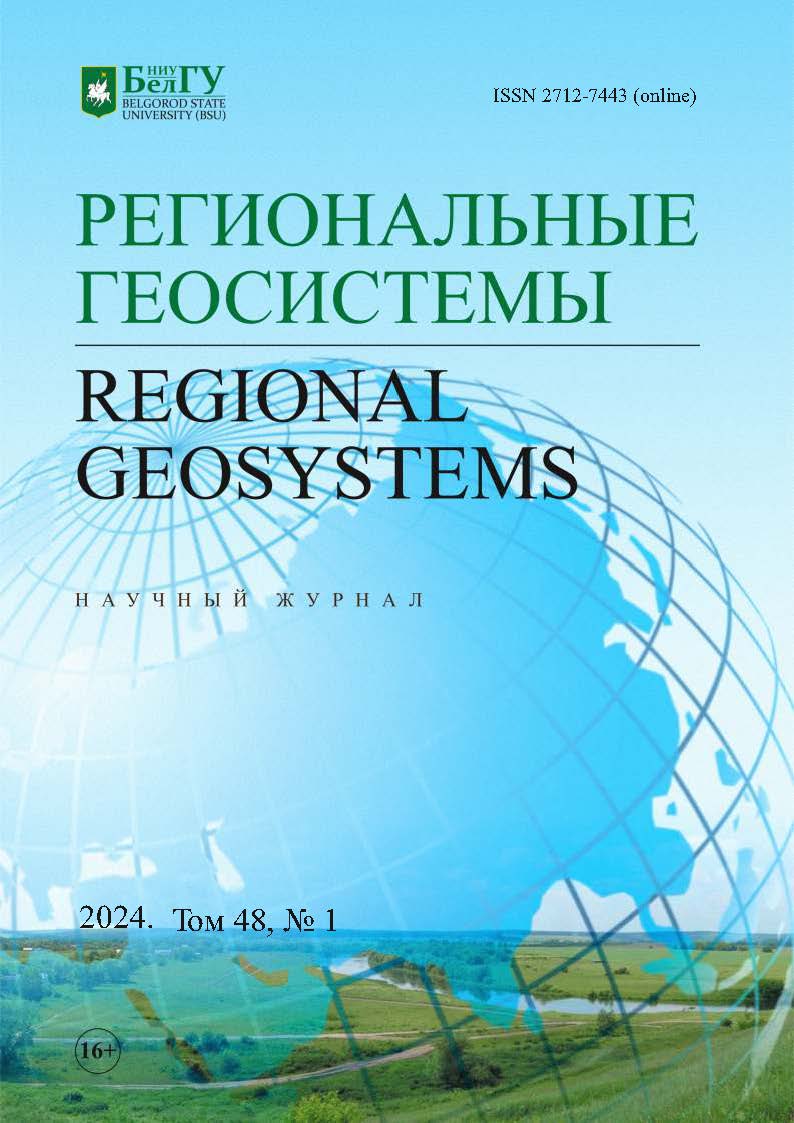Phytotoxicity of Irkutsk and Angarsk Urban Soils
DOI:
https://doi.org/10.52575/2712-7443-2024-48-1-106-117Keywords:
urban soils, urbanozem, soil phytotoxicity, bioindication, soil pollution, Irkutsk, AngarskAbstract
In 2022–2023 some properties of urban soils of Irkutsk and Angarsk were studied. To do this, field studies were carried out in these territories. Morphological description of field soil profiles was performed. Samples of soils, rocks and vegetation were taken for physical and chemical analyses and determination of soil properties in studied areas. Soil sample preparation was carried out according to various methods, soil phytotoxicity analysis was carried out in accordance with GOST R ISO 22030-2009 “Soil Quality. Biological methods. Chronic phytotoxicity to higher plants”. The obtained results were processed: the percentage of germinated oilseed radish seeds (Raphanus Sativus) in the upper soil horizons of key areas of the cities of Irkutsk and Angarsk was detected, the length of the processes and the length of the roots in the soils of the studied samples were determined. The article provides morphological descriptions of field soil profiles of key areas. According to the data received, in the city of Irkutsk, the banks of the Irkut and Ushakovka rivers are the cleanest, and the most polluted area is the shore of the lake (Novo-Leninsky swamps). The soils of forest belts and parks in Angarsk were the least polluted, as can be judged by the high percentage of sprouted seeds of oilseed radish. The soils of passing streets and courtyards are polluted. On average, according to the results and methodology obtained, the soils of the city of Irkutsk and the suburbs turned out to be less toxic than the soils of the city of Angarsk. The average length of shoots and radish roots in soil samples of the city of Irkutsk and its suburbs turned out to be an order of magnitude higher than the values in the city of Angarsk. However, it should be noted that in the conditions of the city natural landscapes are preserved with the help of various environmental-forming and medium-protecting objects – parks, groves, forest plantations, etc., the soils of these areas turned out to be the most non-toxic.
Acknowledgements: The study was carried out at the expense of a state assignment (No. State Registration of Topic AAAA-A21-121012190055-7 (No. FWEM-2021-0002).
Downloads
References
Аринушкина Е.В. 1970. Руководство по химическому анализу почв. М., Издательство Московского университета, 487 с.
Атлас. Иркутская область: экологические условия развития. 2004. М., Иркутск, 90 с.
Бояркин В.М., Бояркин И.В. 2007. География Иркутской области (природа, население, хозяйство, экология). Иркутск, ИД «Сарма», 256 с.
Воробьева Г.А. 2009. Почвы Иркутской области: вопросы классификации, номенклатуры и корреляции. Иркутск, Издательство Иркутского государственного университета, 149 с.
ГОСТ РИСО 22030-2009. Качество почвы. Биологические методы. Хроническая фитотоксичность в отношении высших растений. 2009. М., Изд-во стандартов, 20 с.
Potential accumulation of toxic trace elements in soils during enhanced rock weathering. Electronic resource. URL: www//bsssjournals.onlinelibrary.wiley.com/doi/10.1111/ejss.13343 (Date Views 27.12.2023).
Агрохимические методы исследования почв. 1975. М., Наука, 656 с.
Воробьева Г.А. 2010. Почва как летопись природных событий Прибайкалья: проблемы эволюции и классификации почв. Иркутск, Издательство Иркутского государственного университета, 205 с.
Геохимия окружающей среды Прибайкалья (Байкальский геоэкологический полигон). 2008. Под ред. В.И. Гребенщикова. Новосибирск, Гео, 234 с.
Геоэкологическая характеристика городов Сибири. 1990. Под ред. А.Н. Антипова. Иркутск, Издательство Института географии СО АН СССР, 224 с.
Красильников Н.А. 1958. Микроорганизмы почвы и высшие растения. М., Издательство AН СССР, 463 с.
Теория и практика химического анализа почв. 2006. Под ред. Л.А. Воробьевой. М., ГЕОС, 400 с.
Шишов Л.Л., Тонконогов В.Д., Лебедева И.И., Герасимова М.И. 2004. Классификация и диагностика почв России. Смоленск, Ойкумена, 341 с.
Brevik E.C., Miller B.A., Pereira P., Kabala C., Baumgarten A., Jordan A. 2016. Soil Mapping, Classification, and Pedologic Modeling: History and Future Directions. Geoderma, 264: 256–274. https://doi.org/10.1016/j.geoderma.2015.05.017.
Bushnell T.M. 1942. Some Aspects of the Soil Catena Concept. Soil Science Society of America Journal, 7: 466–476. https://doi.org/10.2136/sssaj1943.036159950007000C0079x.
Doerr S.H., Shakesby R.A., Walsh R.D. 2000. Soil Water Repellency: Its Causes, Characteristics and Hydro-Geomor-Phological Significance. Earth-Sciences Reviews, 51(1–4): 33–65. https://doi.org/10.1016/S0012-8252(00)00011-8.
Miller B.A., Schaetzl R.J. 1993. History of Soil Geography in the Context of Scale. Geoderma, 264: 284–300. https://doi.org/10.1016/j.geoderma.2015.08.041.
Milne G. 1935. Composite Units for the Mapping of Complex Soil Association. Transactions of the Third International congress of Soil Science, 1: 345–347.
Speidel D.H., Agnew A.F. 1982. The Natural Geochemistry of Our Environment. Boulder, CO, Westview, 214 p.
Thorp J., Baldwin M. 1938. Nomenclature of the Higher Categories of Soil Classification as Used in the Department of Agriculture. Soil Science Society of America Journal, 3: 260–271.
Abstract views: 247
Share
Published
How to Cite
Issue
Section
Copyright (c) 2024 Regional Geosystems

This work is licensed under a Creative Commons Attribution 4.0 International License.


